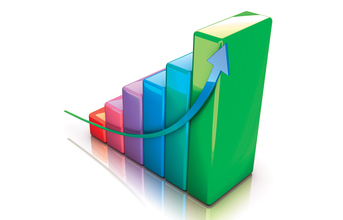
Mirroring the trend for new orders, output increased for the second consecutive month as the manufacturing sector continued to rebound from July's decline. That said, the rate of growth softened from the prior month, and was modest. Favourable economic conditions and strong underlying demand were linked by survey respondents to greater production.
Reflecting improvements in new orders (and subsequent capacity pressures), manufacturing producers continued to increase their payroll numbers in September. In fact, the rate of employment growth quickened to the fastest since October 2012. Staffing levels have risen in three of the past four months. That said, the rate of employment was modest.
The introduction of GST, as well as greater prices for steel and petroleum products reportedly caused cost pressures to intensify during September. The rate of inflation was modest, and remained below the long-run series average. Firms raised their selling prices to protect margins amid higher inflationary pressures.
Nonetheless, due to competitive conditions, firms were only able to increase output charges at a marginal pace Destocking continued at the end of the third quarter, with both pre- and post-production inventories reducing. The latter decreased at the most pronounced rate observed since the inception of the series. Survey respondents reported that orders had been fulfilled directly from existing stocks.
Comment: Commenting on the Indian Manufacturing PMI survey data, Aashna Dodhia, Economist at IHS Markit and author of the report, said: "September data painted an encouraging picture as the sector continued to recover from the disruptions caused by the introduction of the GST in July. This sustained amelioration reflected expansions in new work and output, supported by stronger domestic demand conditions. Subsequently, business confidence strengthened among manufacturers as they reportedly anticipate long-term benefits from recent government policies. This was confirmed as the sector experienced meaningful gains in employment. That said, output and new business growth remained weak in the context of historical survey data. "The strengthening of the Indian rupee may put a strain on efforts to rejuvenate demand for Indian goods from export markets. Meanwhile, cost pressures intensified during September, but inflation remained weaker than the long-run trend. "The lingering effects of recent economic shocks continue to cast a shadow on economic growth as IHS Markit downgrades its real GDP growth forecast to 6.8% for fiscal year 2017/18. It will be interesting to see if India's new economic advisory council will bolster its path to recovery."
END
Source: Nikkei India Manufacturing PMI®


























